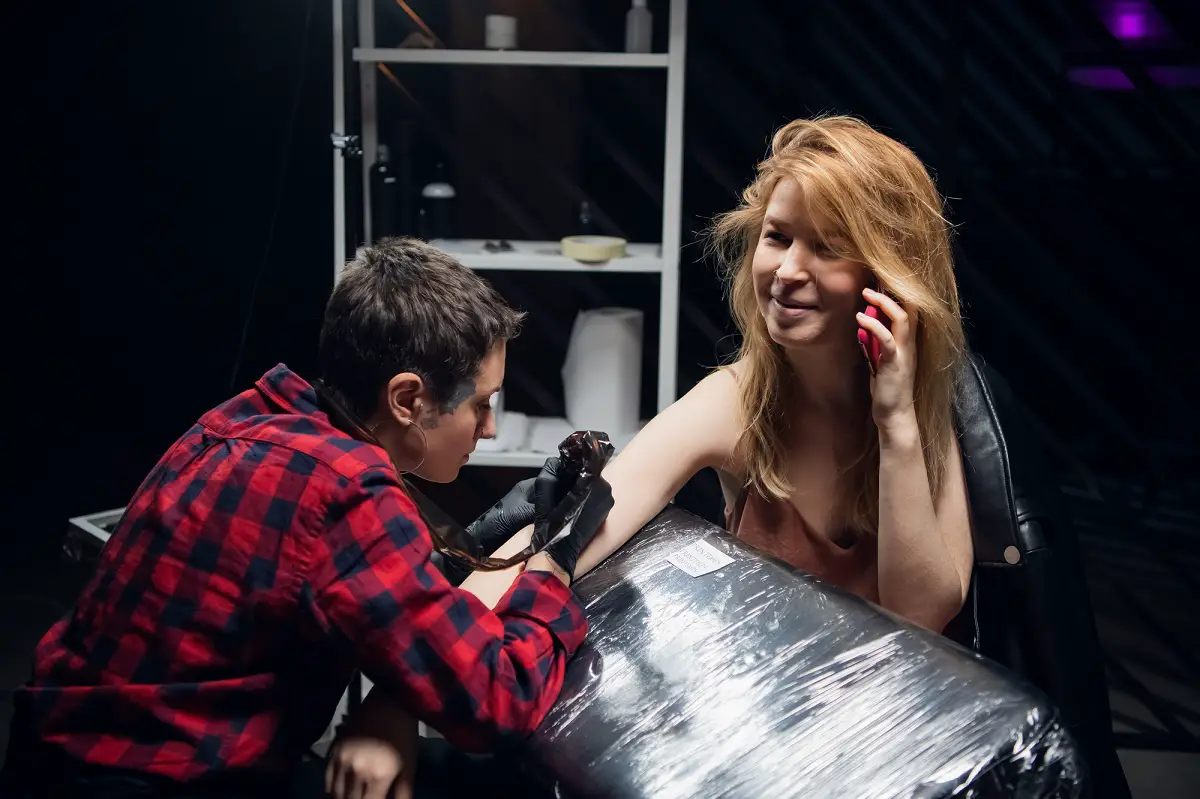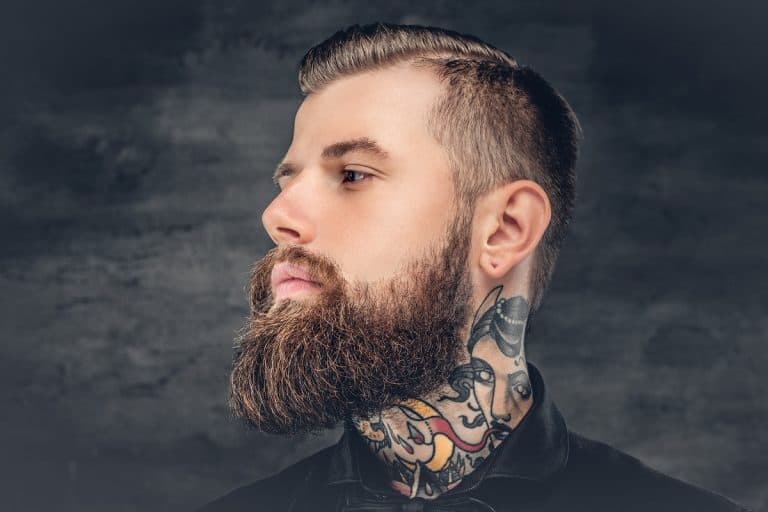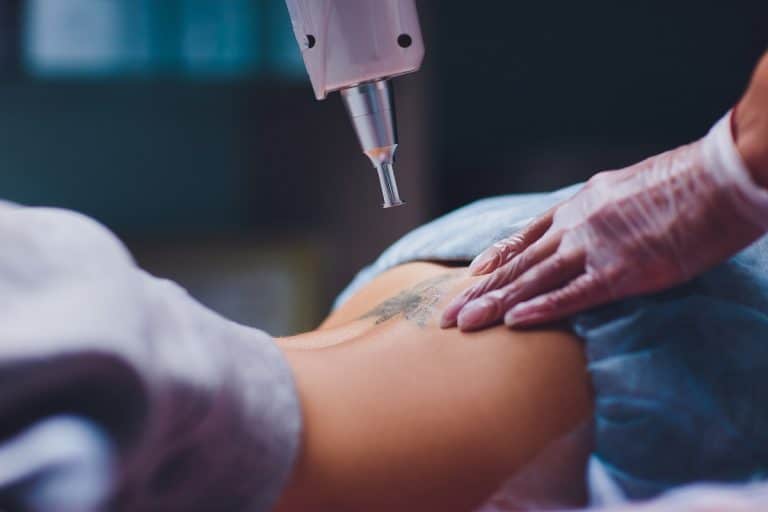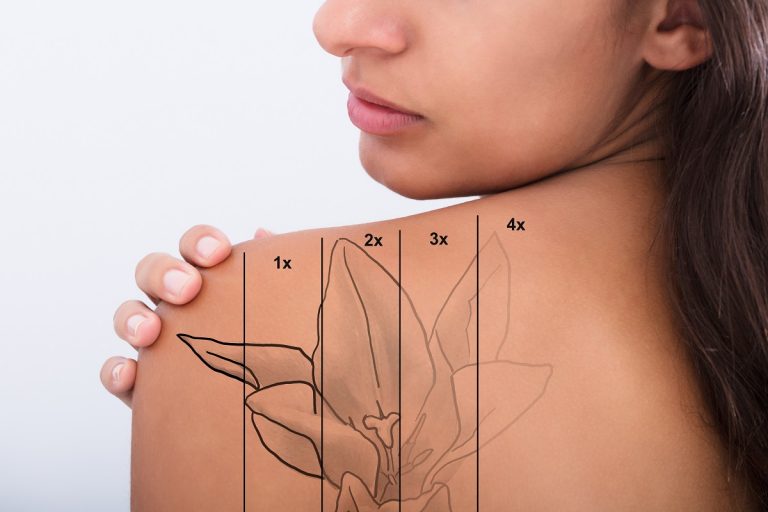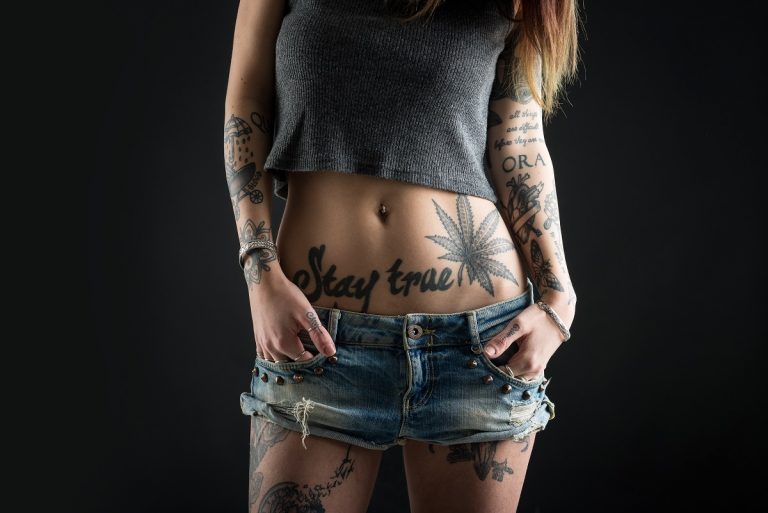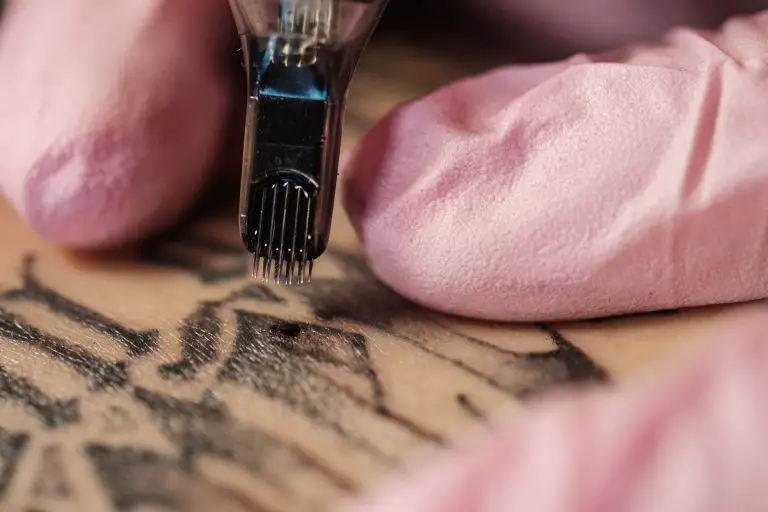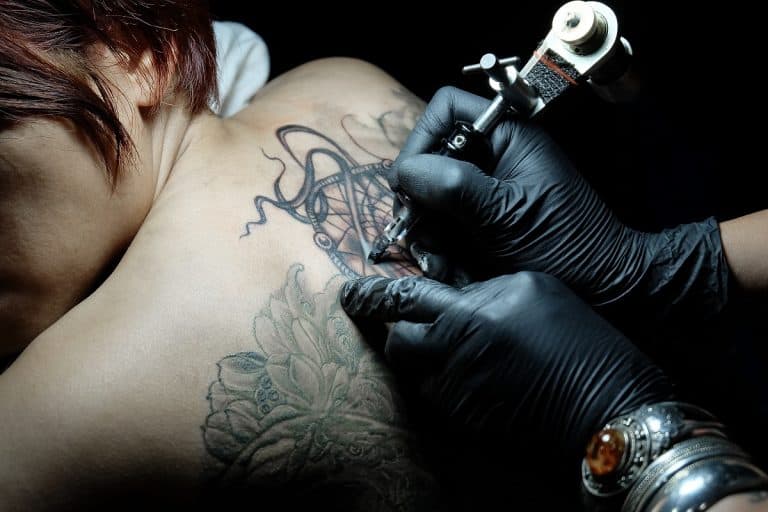Painless Tattoo: Is It Possible To Get a Tattoo Pain Free?
If there’s one thing stopping you from getting a tattoo (alongside money), it must be the pain issue. Tattoos are notoriously known for being rather painful. The pain is, however, not the same for every tattoo. How much your tattoo is going to hurt heavily depends on the location of the tattoo, the style of the tattoo, which determines the type of needle used, or even the color of the tattoo.
For example, tattoos done using white color hurt significantly more since the white parts need to be done two or three times. This means that the tattoo artists will go over the same spot twice or thrice to get the pigment to work. As a result, you’d experience an extra amount of pain.
Now, all of this sounds scary, especially if it’s your first time getting tattooed. But, have you ever stopped to think why so many people have tattoos, despite the pain. Well, when done by a professional tattoo artist, tattoo pain can be mitigated, and the overall experience can be pretty pleasant. But, a certain amount of pain, or at least discomfort simply needs to be present; after all, your skin is being stabbed and poked by tiny needles over 3000 times in a minute.
However, there are some ways, tips, and tricks you can utilize to minimize the overall pain, make it truly bearable and ensure your trip to the tattoo studio is as pain-free as possible. We’ll talk about all of this in the following paragraphs, so make sure to keep on reading!
Tattoos and Pain
Why Do Tattoos Hurt (So Much)?
Before we get into the tips for a ‘painless’ tattoo, we need to talk about why do they hurt in the first place. Well, the science behind tattooing shows why we experience so much pain when we get tattooed.
First of all; the needles and the dye vs. the skin – we need to discuss these to understand the very source of the tattoo pain. At speed of 80 to 150 times a second, a needle pokes into your skin to inject the dye. The needle, upon entering the skin, creates a vacuum area that holds the dye in place.
Well, all of this sounds pretty straightforward and not painful at all. But the issue actually lies in your skin; tattoo dye cannot just be placed anywhere in the skin; in order to stay in place, the needle needs to penetrate into the dermis of the skin, a layer underneath the very skin surface known as epidermins. By placing the dye in the dermis, the dye stays in place for years to come.
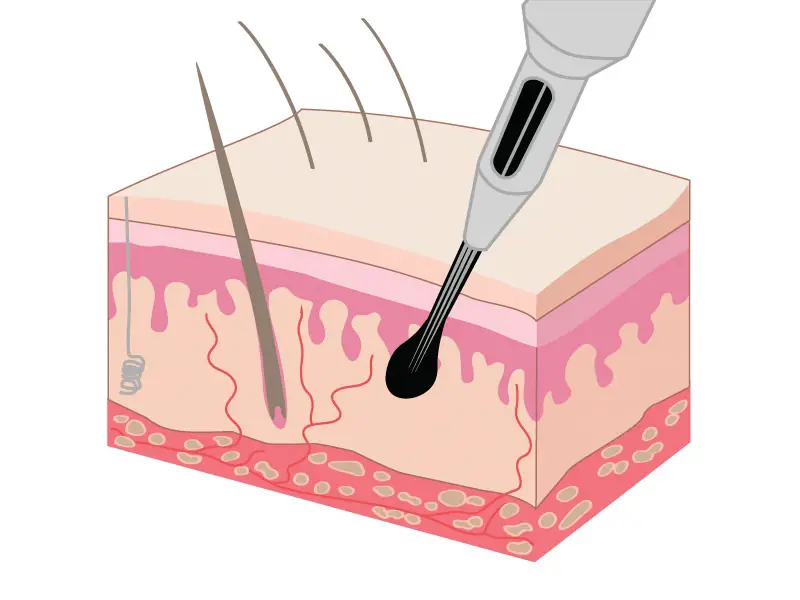
But, unlike the epidermis, the dermis layer of the skin is filled with glands, hair follicles, lymph vessels, blood vessels, and of course, sensory cells. These sensory, or receptor cells, send pain signals to the brain every time the skin is hurt.
So, imagine the panic your body experiences when a needle starts poking, or rather micro-stabbing it at a speed of 80 to 150 times a second. These panicky signals are sent to the brain, ringing the alarm that something’s wrong. As a result, you feel pain, of course, but also general discomfort, sweating, and other unpleasant sensations (depending on the area that’s being tattooed on your body).
Also Read: What Does a Tattoo Feel Like? First Timer’s Guide to a First Tattoo Sesh and Sensation to Expect
Some Tattoos Are Unpleasant – Others Hurt Like Hell – Why?
As we mentioned in the introduction, the pain you’re going to experience during tattooing can vary between general discomfort and mind-numbing pain. There are numerous reasons the pain varies. For example;
- Chances are your tattoo is going to hurt more if it’s done in body areas with thinner skin and numerous nerve endings
- Tattoos hurt more if they’re done with color dye (especially white color)
- If you’re being tattooed by an amateur tattooist, you’ll experience more pain
- If the tattooist is penetrating beyond the dermis of the skin, you’ll experience higher pain levels – this can also result in a tattoo blowout
The most common pain cause is the location of the tattoo. Now, if you decide to get your tattoo somewhere sensitive, like areas with bones, thin skin, and nerve endings, chances are the pain will probably up to pass-out levels.
Such areas include ribs, armpits, head, back of the knees, knees, shinbones, spine, feet, elbows, nipples, private parts, etc. (you get the point). Less painful areas include the buttocks, side of the thigh, forearm, bicep area, and calves. Overall, to experience less pain, make sure to always go for areas with thicker skin, more muscle, and fewer nerve endings.
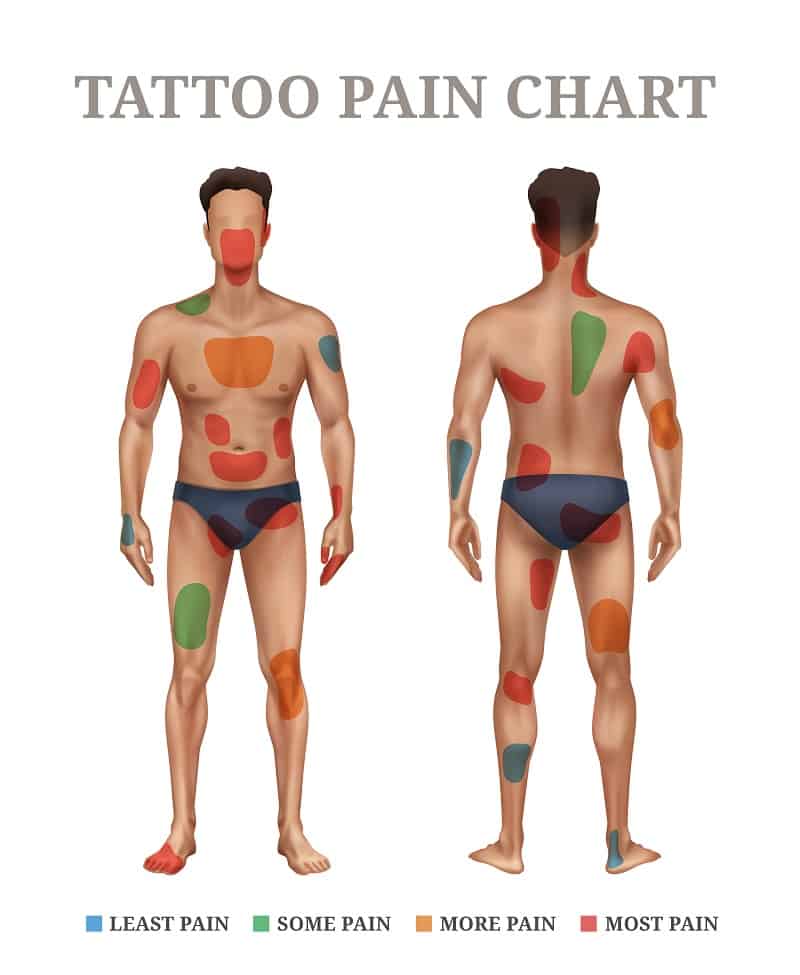
When it comes to other causes of tattoo pain, we have to mention the white ink used for colored tattoos. Now, white ink requires repetition of needle penetration in one place. The color of the ink isn’t the cause of the pain itself, but rather the issue with the pigmentation when placed into the skin. In order for the white ink to show, the tattooist needs to go over the same area several times. Because of the previous skin damage, each new repetition hurts significantly more.
There are also claims that some tattoos hurt more because of the needle the tattoo artist uses. For example, rumor has it that the tattoo needle used for outlining hurts pretty bad. Generally speaking, the outlining of the tattoo is probably the most painful part of the whole process. Also, because of their thickness, some needles can damage and irritate the skin much more than other needles.
So, How Can I Deal With The Pain?
There are some tips and tricks you can utilize to lower pain levels, even with the most painful of tattoos. Some of our recommendations include;
- Numbing sprays – consider a numbing or anesthetic spray to minimize pain during the tattooing process. Prior to use, you need to consult your tattoo artists about the proper application, or whether it can be used for your particular tattoo. Topical anesthetics work by numbing the skin, ensuring you have a pleasant experience.
- Numbing gels – if numbing sprays aren’t much of your preference, we recommend you check out numbing gels. Again, you need to consult your tattoo artist about using these gels. They work by penetrating through the skin, keeping the whole area resistant to irritation and pain. Numbing gels can last between one and two hours and need to be applied an hour before the tattooing process begins.
- Morning appointments – in the morning is when our adrenaline levels are at peak. Adrenalin is a pain-regulating hormone that ensures your pain tolerance increases during testing situations and conditions. So, by scheduling an appointment in the morning, chances are you’ll go through it with ease and minimum pain or discomfort.
- Coming in sober – in the tattoo community, coming to a tattoo appointment under the influence of drugs or alcohol is something that’s truly frowned upon. Almost every tattoo artist will refuse to tattoo you if you’re under the influence, but if you somehow end up getting tattooed, you will experience much higher pain levels and abundant bleeding. So, try not to drink or consume opiates at least 24 hours prior to tattooing. It is important to avoid alcohol and opiates until the tattoo heals, as well.
- Carbing-up – loading up your body with extra energy is advisable before a tattoo appointment. Sitting through a tattoo appointment can be pretty exhausting; with all the tension and calorie burning, your body can lose stamina and become more sensitive to pain. So, by ‘carbing-up’, you’re providing your body with additional energy it will use to make the experience pleasant and less painful, ensuring you stomach all the unpleasantness in an easier way.
- Hydration – water is essential for your body’s proper functioning. By staying properly hydrated, you will ensure your body is truly ready for the tattoo appointment. It is recommended to amp up your water intake at least 12 hours before the tattoo appointment.
- Bringing company – generally speaking, it isn’t recommended to bring all of your friends to a tattoo appointment. As fun and as exciting it is to get a tattoo, tattoo artists find it rude when people bring their whole friend group to the tattoo studio. However, one friend is acceptable; bring your favorite person to keep you calm and distracted during the tattoo process.
- Asking for a break – once you’re in that tattoo chair, there’s no going back. The tattoo artist is there to help you go through the process and make it as pleasant as possible. So, don’t be scared to ask for a break whenever you need one.
Short breaks will help you take a deep breath and prepare for more of that needle-poking stuff. Also, bring a snack to the appointment, and eat it during the break for extra energy. Of course, when we say ‘short break’, we mean a few minutes, not half an hour. After all, the tattooist needs to follow their schedule.
Also Read: Tattoo Pain Management: How to Make Tattoos Less Painful
Final Thoughts
Getting a tattoo is never a completely pleasant process. There are always some levels of pain and discomfort, even if you’re getting tattooed in the least painful area. But, by using some of our coping tips and tricks you can go through the process with minimum pain and discomfort.
Always schedule your tattoo appointments with professionals and always talk to your tattoo artist about pain-minimizing actions, like using painkillers or numbing sprays/gels. Consult with your tattoo artist about the process and point out that you’ll be taking short breaks to minimize the pain and discomfort. And, always remember that getting a tattoo is fun and exciting, so enjoy the process and watch your tattoo come to life. It is truly a unique experience!
- Safe, non-toxic plant-based temporary tattoos made with 100% high-definition printing for a realistic look without the pain
- Easy to apply and remove - just stick for 20 seconds then take off
- Set includes 5 sheets with 17 fun, delicate designs like hearts, cats, smiles, suns, moons, and more
- Waterproof and long-lasting - stays on up to 2 weeks of wear
- Fashionable for women, men, girls and boys
- Place on arm, wrist, neck, leg, finger, waist, foot and more
- Great for parties, birthdays, and showing your unique style

